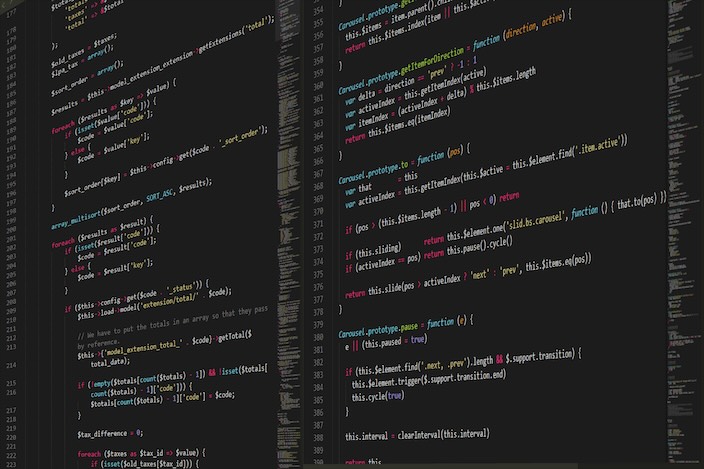Best Practices for Collaborative Development: Empowering Teams with Unified Remote Environments

In today’s fast-paced software development landscape, collaboration is key to delivering high-quality applications on time. However, as teams grow and projects become more complex, collaborative development can become challenging. Issues such as environment inconsistencies, configuration drift, and lengthy development loops can slow down progress and lead to integration issues. In this blog, we’ll explore some best practices for collaborative development and how Kloudlite helps teams execute these practices effectively by providing unified remote environments.
General Issues in Collaborative Development
Collaborative development, especially in the context of distributed teams and microservices architecture, often encounters several key challenges:
-
Environment Inconsistencies: Different developers working on the same project may have slightly different local environments. These inconsistencies can lead to issues that only manifest when code is integrated, making bugs difficult to trace and fix.
-
Configuration Drift: As projects evolve, configurations can drift apart between development, staging, and production environments. This drift can lead to unexpected behavior when deploying code that worked perfectly in a local environment.
-
Lengthy Development Loops: Traditional development workflows often involve a lengthy cycle of coding, testing, building, deploying, and finally integrating with other services. This loop can become a bottleneck, especially when changes need to be tested against dependent or dependent applications.
-
Collaboration Bottlenecks: In a microservices architecture, multiple teams or developers often need to work on interconnected services. Ensuring that changes made by one developer do not break the work of others can be challenging without a unified environment.
Best Practices for Collaborative Development
To overcome these challenges, teams can adopt several best practices that promote a more efficient and collaborative development process.
-
Use Unified Development Environments:
Ensuring that all developers work within the same environment that mirrors production is crucial. When everyone is using a unified environment, it significantly reduces the likelihood of environment-specific bugs and ensures that code behaves consistently across all stages of development. This practice eliminates the common issues of configuration drift and environment inconsistencies, making it easier to integrate changes from different developers and reducing the time spent on debugging environment-related issues.
-
Shorten the Development Loop:
Minimizing the time it takes to test changes, not just in the current application but also in its interactions with dependent services, is essential for maintaining a fast-paced development cycle. The shorter the development loop, the quicker developers receive feedback on their changes. This practice not only enhances productivity but also helps catch and resolve issues early in the development process, preventing them from escalating into larger problems during integration or deployment.
-
Adopt Continuous Integration/Continuous Deployment (CI/CD)
Implementing CI/CD pipelines automates the process of integrating, testing, and deploying code changes, which is crucial for maintaining a steady flow of updates. By ensuring that changes are continuously tested against the latest version of the application and its dependencies, CI/CD pipelines help catch integration issues early. This automation speeds up the development loop, allowing teams to focus more on coding and less on the repetitive tasks of building and deploying.
-
Enable Real-Time Collaboration:
Utilizing tools and platforms that allow multiple developers to work in the same environment simultaneously can drastically improve team dynamics. Real-time collaboration tools ensure that changes are reflected immediately, facilitating quick feedback and reducing the risk of integration conflicts. This approach fosters a collaborative atmosphere where developers can work together efficiently, seeing the impact of each other's work instantly, and making necessary adjustments on the fly.
-
Ensure Production-Parity in Development Environments
Aligning development environments as closely as possible with production is essential for reducing deployment failures. When development environments mirror production—including configurations, secrets, and network settings—it ensures that code is tested in conditions that match the final deployment environment. This practice minimizes the risk of surprises during deployment and increases the reliability of the application once it goes live.
How Kloudlite Helps You Execute These Best Practices
Kloudlite is designed to empower teams to adopt and execute these best practices effectively. Here’s how:
-
Unified Remote Environments:
Kloudlite provides a unified environment that mirrors production, ensuring that all developers work in a consistent and stable setup. By connecting local workspaces directly with the remote environment via a connected VPN network, Kloudlite eliminates configuration drift and environment inconsistencies, making collaborative development smoother and more reliable.
-
Shortening the Development Loop:
Kloudlite significantly shortens the development loop by allowing changes made in the local workspace to be instantly reflected in the remote environment. This direct connection removes the need for lengthy build and deployment processes, enabling developers to test their changes in real-time against all dependencies and interrelated services.
-
Support for CI/CD Integration:
Kloudlite seamlessly integrates with CI/CD pipelines, allowing teams to automate testing and deployment processes. By ensuring that all code changes are continuously tested in a production-parity environment, Kloudlite helps teams catch integration issues early and maintain a fast, efficient development loop.
-
Real-Time Collaboration:
Kloudlite enables real-time collaboration by allowing multiple developers to work in the same environment simultaneously. Any changes made by one developer are immediately available to others, fostering a collaborative atmosphere where issues can be identified and resolved quickly.
-
Production-Parity Environments
With Kloudlite, production-parity is built into the development process. The platform ensures that the environment developers work in aligns perfectly with production, including all configurations, secrets, and network settings. This minimizes the risk of surprises during deployment and ensures that what works in development will work in production.
Conclusion
Collaborative development can be challenging, especially in complex, distributed systems. However, by adopting best practices such as using unified environments, shortening the development loop, enabling real-time collaboration, and ensuring production-parity, teams can significantly improve their efficiency and productivity.
Kloudlite provides the tools and infrastructure necessary to implement these best practices effectively. By offering a platform that seamlessly integrates local workspaces with remote environments, Kloudlite empowers teams to collaborate more effectively, iterate faster, and deliver higher-quality software.
With Kloudlite, you can transform your development workflow, overcome the challenges of collaborative development, and ensure that your team is always working in a unified, production-ready environment.


